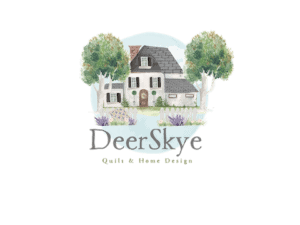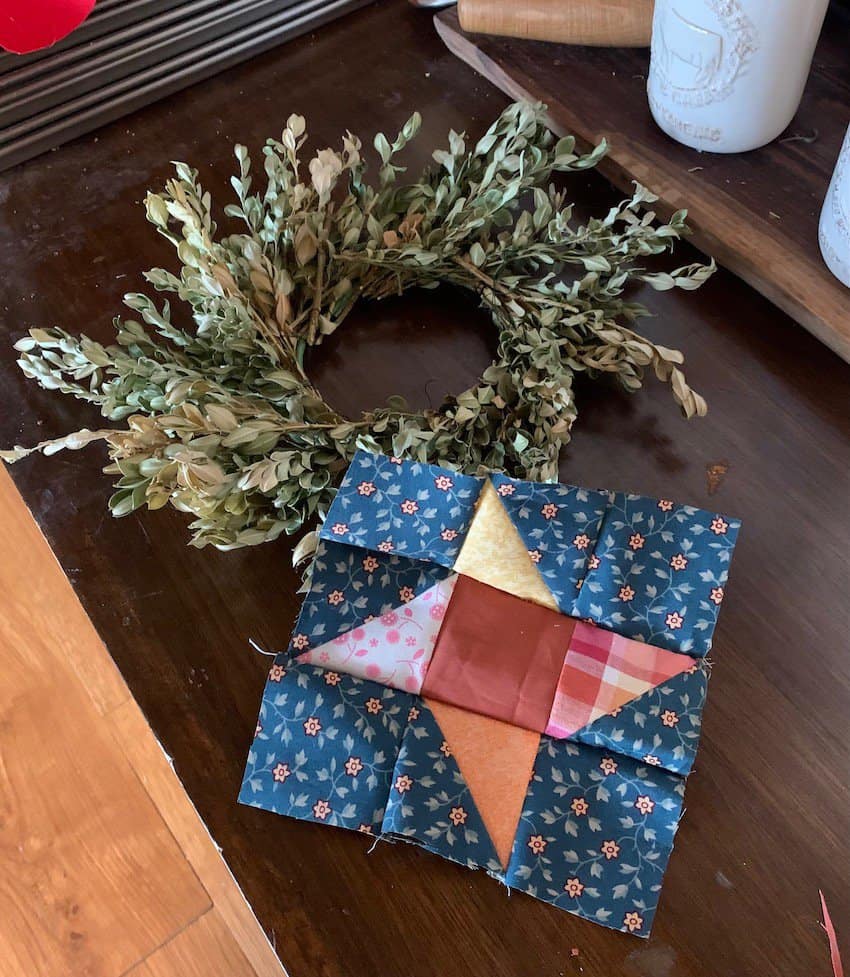Quilting is a creative adventure and can be a very rewarding activity. You will need a little help to get you on your way to quilting success. A little creativity and can do attitude will take you a long way when you start learning to quilt. I want to help you be successful. Use these 11 solid tips that will help you to become a good quilter.
- You don’t have to have an expensive sewing machine to begin.
- You need a few essential quilting tools in your sewing/quilting tool box.
- Choose high quality fabric to sew with.
- Press vs ironing your seams.
- Start sewing a variety of simple and easy to sew quilt blocks.
- Practice sewing 1/4″ seam allowances.
- Don’t be afraid to experiment with a variety of fabrics and colors.
- Learn the quilting lingo.
- Let yourself make mistakes.
- Make yourself a cozy, comfy place to sew and enjoy yourself.
- Take time to find your style of quilting.
Get ready, get set and you’re almost ready to start your quilting adventure. I call it an adventure because that is what happens each time you start a new quilting project. Choosing your pattern and choosing your fabric and seeing it all come together is like starting a new adventure each time. The tips I have given you aren’t meant to overwhelm you but will give you the confidence you need to become an accomplished quilter. Even if you never venture past beginner patterns, doesn’t matter. Being able to see a pattern start to finish is what really counts.
Sewing Machine With A Straight Stitch Is Key
There are so many sewing machines on the market with a lot of embellishments, accessories loaded with bells and whistles. It’s enough to make your head spin but guess what? If the sewing machine you have sews a straight stitch, you’re in like flint. All you need starting out is a sewing machine that sews a straight stitch. Yep. It’s just that simple. That’s it in a nutshell. I have been sewing on the same machine that I bought over twenty years ago. A Husky Star by Husquvarna. As you build your quilting confidence, you can do your research and find a sewing machine you want to upgrade to.

Essential Quilting Tools Are Your Friend
There are a few tools to start with that you need in your quilting kit. They come highly recommended because they will make your quilting experience much easier, smoother, and more streamlined when using them.
Here is the list to start with:
- Rotary Cutter
- Sharp pair of scissors
- Cutting mat
- Acrylic ruler of your choice (I use a handy 6.5 x 6.5 acrylic ruler often!)
- Pincushion If you want to make your own, try making this DIY Cute Cottage Pincushion
- Straight pins (I like longer pins) again of your choice or Sewing clips
- Iron and pressing mat, towel, or ironing board
- A comfy chair that supports your back
Fabric Quality
Any quilting adventure will take precious time and money to get started. You want only the best when sewing quilt blocks and creating a quilt. Fabric quality really makes a difference. Don’t skimp on quality just because it costs more. Look at it like an investment with a better return. Quality fabric holds up longer. It costs more but it gives your quilt more value. It washes better than cheap options, it has stronger fibers and gives your quilt more weight, more substance, and sews up better and looks a lot better! Hmmm was I strong enough in my trying to convince you?
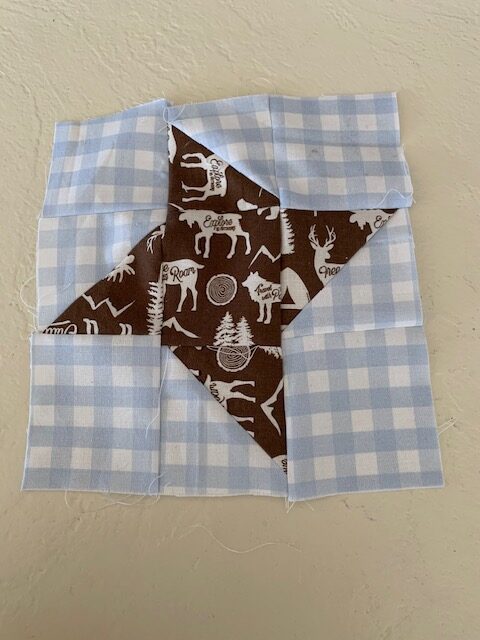
Press Don’t Iron Your Seams…What?
Ok don’t panic. Pressing versus ironing let’s get this straight right now. When you sew a seam, you need to make it flat. Press your seam with light pressure. Lightly press and lift, lightly press and lift all the way up the seam. If you place an iron on the seam and move it up and down the seam applying pressure, you may distort the seam. I know weird huh but it makes a difference.

Ease Into Quilt Blocks
Time for some fun. Choose a simple quilt block like a 4 Patch or a 9 Patch square, Swiss Cross blocks, Friendship Star quilt blocks, or Half Square Triangle blocks. Practice sewing one of these easy blocks. You can sew several of the same kind of quilt blocks with the same fabric design and color or sew several quilt blocks in different colors that coordinate. You can then assemble them into a simple quilt when you have sewn enough quilt blocks for the size you want to make. Or you can sew a variety of different easy to sew quilt blocks with the examples I mentioned above and practice your sewing quilt blocks that way. (Side note…alternate quilt blocks the same size as you have been sewing only in solid colors and make a cute simple cute quilt that way. If you are not ready to tackle a quilt, no worries. Hang on to those blocks for later. Once you start this quilting journey, you will recognize so many possibilities for making simple and useful quilts for yourself or someone else. Best part about it… I think you will enjoy it and have fun doing it!
Practice Makes Perfect Sew 1/4″ Seams
Most quilt patterns you sew require seams that measure 1/4″. If you don’t sew your seams the right way, it can throw your whole quilt off because it won’t measure correctly once you finish your quilt blocks. Then it’s pretty tricky trying to put all those quilt blocks together you’ve spent a lot of time sewing and frustrating too because your blocks won’t match up. Here’s a thought. Take some scrap fabric and just practice sewing 1/4″ seams. If your sewing machine doesn’t have a 1/4″ mark for you to follow as you sew, put some colored tape down on your sewing machine to mark where the 1/4″ seam allowance should be sewn.
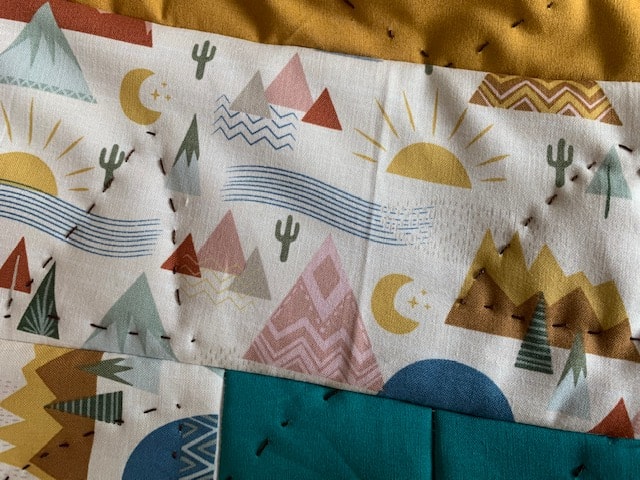
Be Curious And Adventurous With Fabric & Color
Take some time to play around with fabrics and different color combinations. Don’t be afraid to do this! Experiment with your creativity. This will help your creative side to blossom when making quilts. You may find a quilt pattern you love but you will have the confidence to make it up in other colors or fabrics than is suggested by the designer of the quilt pattern you want to make. That is totally ok to do. Make each quilting project you attempt, your own by using new ideas and colors for completing the quilt. Dare to add your own flair! (Or not. You can make it with the colors and fabric suggested by the pattern designer if you prefer.) Get as creative as you like with your project.
Learn Quilting Lingo
Quilting lingo… is just that. It means learn the talk if you’re going to learn the walk haha. Does this sound familiar? Binding, backing, quilt topper, backstitch, etc…all quilting talk. There is a really easy way to learn the words you will need to know to understand patterns and quilting. We’ve got you covered talking about quilters in general. There are plenty of “learn to quilt” type tutorials, blogposts (hint, hint including this one) videos, books, etc… to learn from. Take time to do a little research. Trust me! It will make your quilty life so much easier when strolling along your quilting adventure. (Smiley face and a wink from me.)
Mistakes Are Good
Most people equate mistakes with failure but I say au contraire (on the contrary)! Mistakes are a step in getting better at what you do. Believe me! Even the most talented advanced quilter makes mistakes! It is all a part of the learning process and you can learn from those seemingly impossible to overcome sewing and quilting mistakes. Don’t beat yourself up about making mistakes. Instead, just keep going when (not if) it happens. Practice, practice, and more practice will help you overcome those pesky mistakes. Try to figure out ways to fix the mistake and if you have to unpick the sewing you just did and start over. Set aside a little time each day to get better. Slow down. Enjoy the process and believe that you can learn to quilt.
Create A Comfy, Cozy Place To Sew
You need a space to call your own. A place to quilt and sew where you can leave your project undone on a table or in a room where it won’t be in the way and you can just pick up again where you left off with little trouble. Look for a place in your home maybe it’s an out of the way corner where you put up a room divider to make it more private. Maybe like me it’s your formal dining room. Downstairs in your family room. You could even set up a card table in a corner of a room, throw a cute table cloth over the table that reaches the floor. Hide your quilty project in a large bin or basket under the table. Wherever you decide to set up shop so to speak, you will want your working space to have these things:
- Add enough lighting to light your sewing and quilting space.
- If possible, create your space by windows where natural light streams in.
- A comfortable and supportive chair is a must.
- Have all your sewing tools and thread organized nearby.
- Create a pressing area with an ironing board, a pressing mat, folded towel, etc… close to your sewing area.
- Have a few extra soft blankets stacked nearby to snuggle in if you need while sewing.
- If your sewing area tends to be chilly, add a small heater to the area you can plug in while you quilt. If it is too hot, have a floor fan by your side. Remember comfortable and inviting is your goal.
- Add a few creative things maybe a wreath, pictures, whatever sings to you to make your space cozy and comfy.
- Some like to have a container of favorite snacks available.
- Listen to your fav podcasts, music, or watch a movie while you sew and quilt in your own space.
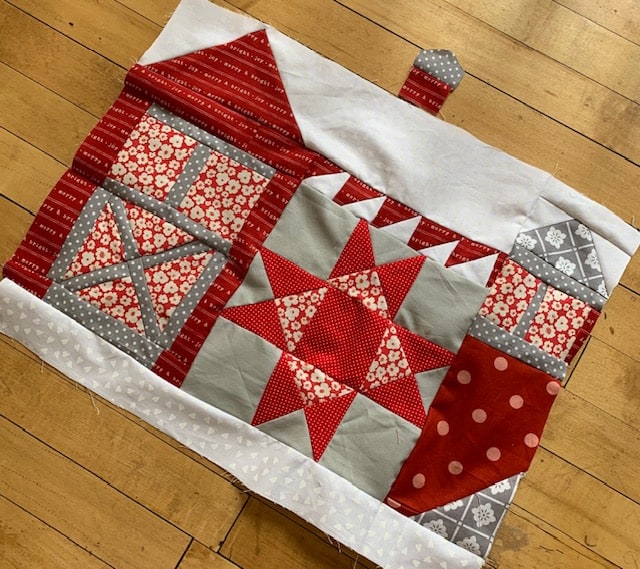
How To Find Your Style
As you start your quilting journey, you will find there are designs you love and designs that don’t speak to you. Take your time. Do your research and find what you love when you quilt. It might take a while. It might not. Keep an open mind when it comes to quilt design. If you can, attend some quilt shows and find quilts that you really like. Same with surfing online to find quilt designers whose works you love. Eventually you can identify the quilt design you keep coming back to and making. You may love them all. A variety of applique completely took me by surprise and how much I loved it! It helped me find what I love making in the quilting industry. Then it is easier when designing the quilt you want to make. You know what you want in the quilt recipe and you know what to look for in a quilt pattern and even the colors you tend to choose when sewing up your quilt blocks. Happy Quilting!
You may also like:
After you make your quilt, backing added and binding done, add a cute handmade quilt label to make it memorable An Unforgettable Way To Label Your Handmade Quilt: 5 Free Applique Quilt Label Design Templates
A hot pad is an easy quilting project to make. Definitely for a beginner. Give this a try Easy Peasy Quilted Hot Pads You Can Make
Need a handmade quilt to give for a birthday, Christmas, or keep for yourself? It’s super cute and will accent the table you put it on. Fun Easy DIY Quilted Raw Edge Flower Table Runner
Mini quilts are a good idea for beginners learning to make a quilt. It is never too early to start making a holiday mini quilt. Why not try this one? How Do You Make A Mini Quilt? Vintage Halloween Mummy
Recent Posts
Do you need a quilt to give as a gift and need it like yesterday? Here is a fun quick quilt you can make in a day (maybe less) once you have your supplies. It features homemade raw edge, scrap back...
You know those orphan blocks you just can't bring yourself to throw away? They took some time to make but they just didn't fit in the quilt you were making? Well I've got a solution for using them. A...
